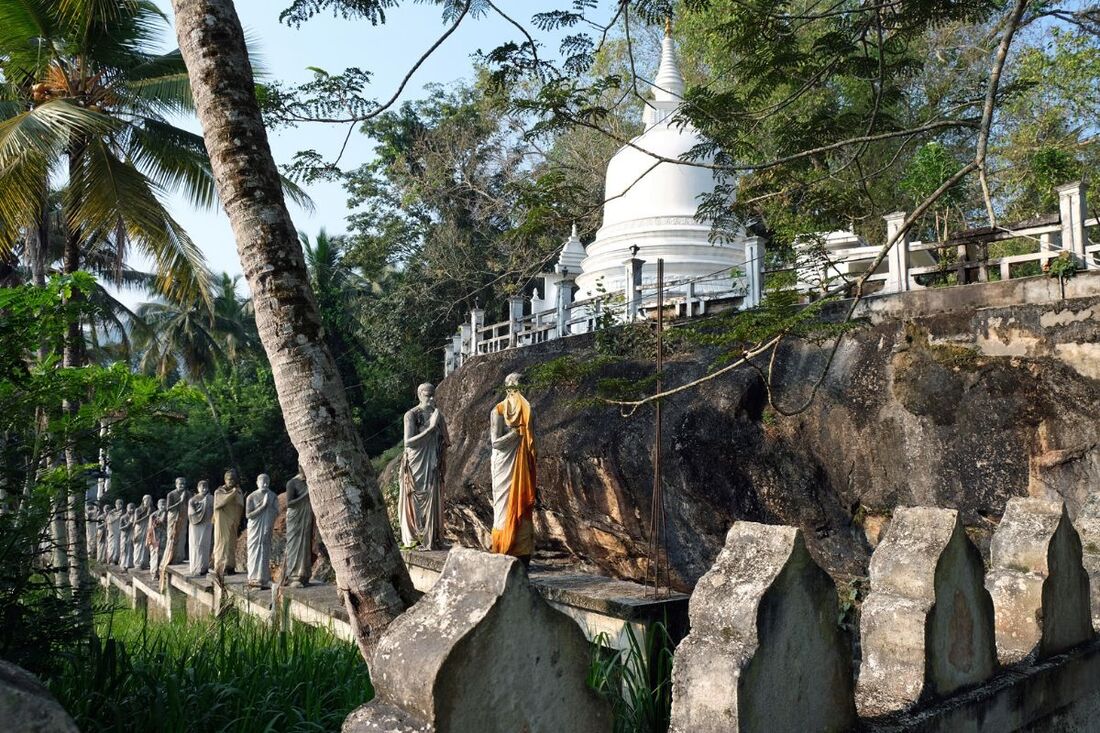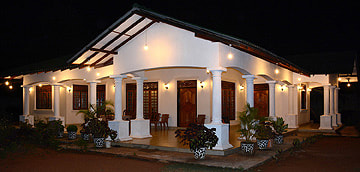Bibile is located in the very northwest of Moneragala District. With a population of around 35,000, it's the most significant city in the remote rural region between Moneragala town and Mahiyangana in Badulla District. Bibile is at the crossroad of the shortest route from Kandy to Ampara with the A5 highway, which is the main road of Uva Province. The road distance to the provincial capital Badulla is 60 km (37 miles) via Passara. Kandy and Colombo are in 115 km (71 miles) resp. 235 km (146 miles) distance to the west. Batticaloa on the east coast is 108 km (67 miles) to the northeast of Bibile.
Historically, Bibile belongs to the Wellassa region of the former Kandy Kingdom, which was the last independant monarchic rule over parts of Sri Lanka. In 1817, two years after the abolishment of the Kandy Kingdom, Bibile was at the core of the Uva-Wellassa rebellion against the newly established British colonial rule over all regions of the island. The most prominent British victim in the initial phase of the uprise, which is now called the Great Rebellion, was Major Sylvester Douglas Wilson, the colonial officer in charge in Badulla. He was killed by arrows, which were shot at his small detachment, when they advanced Bibile. A century afterwards, the so-called Wilson Tombstone was set up at the presumed spot where the officer died. It can still be seen at the A5 highway near the Unagolla temple, 4 km (2.5 miles) south of the center of Bibile. An inscription reads: "In memory of Sylvester Douglas Wilson Assistant Resident and Agent of the British Government in the Province of Uva who was killed near this spot at the outbreak of the Kandyan Rebellion 16th Sept 1817. This monument was erected by the Government of Ceylon 1912." In the aftermath of the Uva-Wellassa rebellion, the surroundings of Badulla and Bibile suffered most under the atrocities inflicted by the colonial power as a punishment in retaliation of the insurgency. Extrajudicial executions of male farmers and systematic devastation of cultivated lands aimed at making the entire region uninhabitable.
The town of Bibile is not a major tourist attraction in itself. Rather, it's a gateway for exploring some of the most lonesome regions in Sri Lanka, particularly the Bintenna area with numerous lakes, which is to the northwest of Bibile, and the hills of the Gal Oya area to the southeast. Both areas, Bintenna and Gal Oya, are the heartlands of the aboriginal Veddah (Wedda) people of Sri Lanka. To the southwest of Bibile are the easternmost ranges of Sri Lanka's central highlands. Apart from Madulsima Mini World's End, which might get some attention in guidebooks, there are several other rewarding hiking destinations in this part of the hillcountry, that is nonetheless very rarely frequented by foreigners. The immediate surroundings of Bibile and the agricultural areas in the direction of Moneragala town are well known for Sri Lanka's best orange qualities. A famous variety is known as "Bibile Sweet". However, as a result of changing climates the orange cultivation was severely affected by fungal and pest invastations in recent years.
Historically, Bibile belongs to the Wellassa region of the former Kandy Kingdom, which was the last independant monarchic rule over parts of Sri Lanka. In 1817, two years after the abolishment of the Kandy Kingdom, Bibile was at the core of the Uva-Wellassa rebellion against the newly established British colonial rule over all regions of the island. The most prominent British victim in the initial phase of the uprise, which is now called the Great Rebellion, was Major Sylvester Douglas Wilson, the colonial officer in charge in Badulla. He was killed by arrows, which were shot at his small detachment, when they advanced Bibile. A century afterwards, the so-called Wilson Tombstone was set up at the presumed spot where the officer died. It can still be seen at the A5 highway near the Unagolla temple, 4 km (2.5 miles) south of the center of Bibile. An inscription reads: "In memory of Sylvester Douglas Wilson Assistant Resident and Agent of the British Government in the Province of Uva who was killed near this spot at the outbreak of the Kandyan Rebellion 16th Sept 1817. This monument was erected by the Government of Ceylon 1912." In the aftermath of the Uva-Wellassa rebellion, the surroundings of Badulla and Bibile suffered most under the atrocities inflicted by the colonial power as a punishment in retaliation of the insurgency. Extrajudicial executions of male farmers and systematic devastation of cultivated lands aimed at making the entire region uninhabitable.
The town of Bibile is not a major tourist attraction in itself. Rather, it's a gateway for exploring some of the most lonesome regions in Sri Lanka, particularly the Bintenna area with numerous lakes, which is to the northwest of Bibile, and the hills of the Gal Oya area to the southeast. Both areas, Bintenna and Gal Oya, are the heartlands of the aboriginal Veddah (Wedda) people of Sri Lanka. To the southwest of Bibile are the easternmost ranges of Sri Lanka's central highlands. Apart from Madulsima Mini World's End, which might get some attention in guidebooks, there are several other rewarding hiking destinations in this part of the hillcountry, that is nonetheless very rarely frequented by foreigners. The immediate surroundings of Bibile and the agricultural areas in the direction of Moneragala town are well known for Sri Lanka's best orange qualities. A famous variety is known as "Bibile Sweet". However, as a result of changing climates the orange cultivation was severely affected by fungal and pest invastations in recent years.




